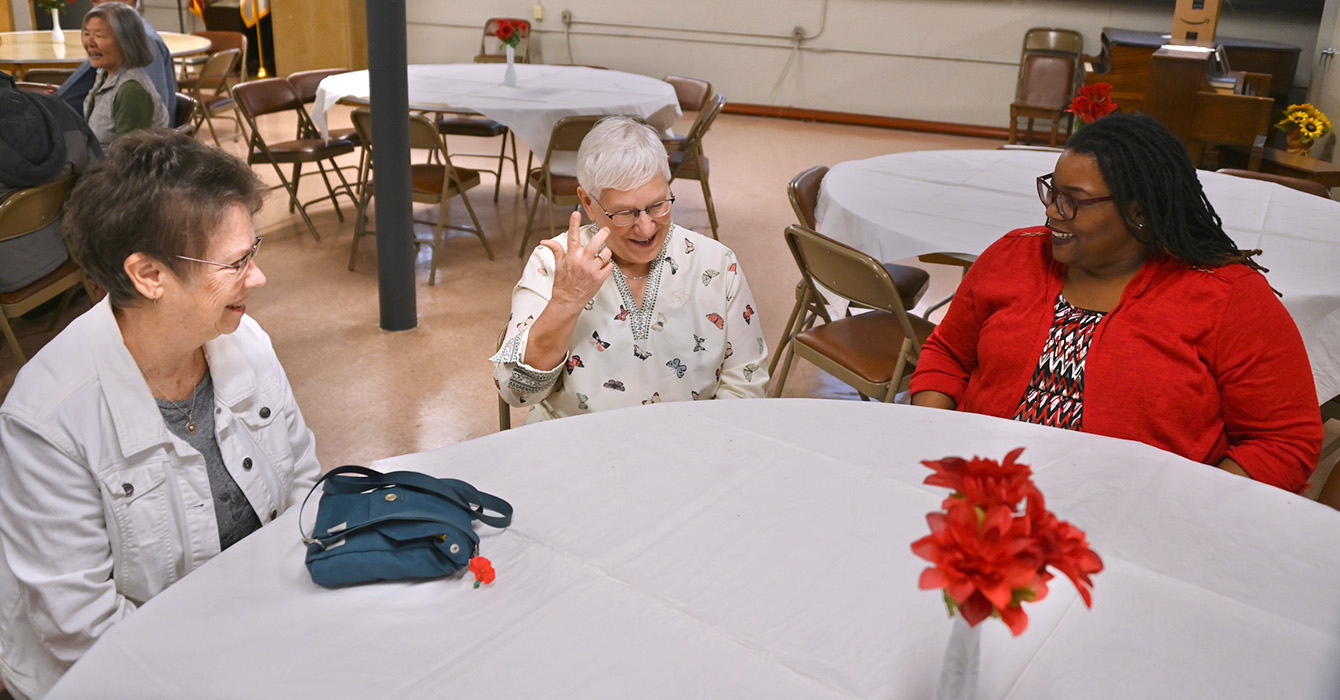More than 500%.
In just two months, my congregation’s website traffic jumped by more than 500%. This sudden, steep rise in web traffic was accompanied by other changes as well. The number of visitors to specific pages on the site shifted. Suddenly, the Listen to Sermons page became the most heavily frequented. Meanwhile, the Events page languished with no visitors. Something big was happening.
This all took place from February 2020 to April 2020 -- coinciding, of course, with the onset in North America of the coronavirus pandemic. The arrival of the pandemic profoundly changed my church’s online presence. We closed the sanctuary doors and shifted to livestream services. We moved our Bible studies from the church to the cloud. Instead of passing an offering plate, we passed a link to online giving.
My congregation’s experience is not unique. The COVID-19 era has caused many congregations to perform their ministry almost exclusively online through digital means such as websites, livestreaming and social media. And since it appears that social distancing will continue for many months to come, congregations will be relying heavily on digital media for the foreseeable future. It is now vital for congregations to ensure that their websites, social media and overall internet presence are accessible and easy to use.
Many churches and ministries struggle to cultivate a successful online presence. The sheer number of platforms from which to choose can be overwhelming. The difficulty in designing a website can strike fear in the hearts of staff members and volunteers. Remembering all the passwords can feel like learning Greek. There are plenty of reasons why churches put off improving their online presence.
Yet little things can make a big difference when it comes to successful digital media ministry. Regardless of the size of your congregation, there are several little things you can do to create a useful website and an excellent user experience. These little things can help maximize your ministry’s online presence.
Make users your focus. It is very easy to overlook the primary purpose of your congregation’s web presence. The default assumption is, “Everyone else has a website, so we probably should too.” This is not entirely wrong. Yet it’s not the real why behind your web presence. Ultimately, your website and social media exist for users. By “users” I mean the actual people using your website to access information and content. The pages, the posts and the pictures are all there to allow people to engage with your ministry.
A little thing you can do to improve your web presence is to create some user personas. A user persona is a fictitious profile of the type of person most likely to use your digital media. This can be a simple one-page description of the age, location, motivations, goals and frustrations of a typical user. Creating at least two different user personas for your ministry, one for a visitor and one for a member, will help you focus your content on the actual users of your digital media.
Let users show you what is wrong. We have all had someone call or email the church office and say, “I cannot find this thing on the website.” In those moments, the temptation is to blame the user for being a bumbling blockhead. Resist the temptation! When users have trouble with your website, it is likely an indication that the site is poorly designed.
A little thing you can do is to ask several people to do a scavenger hunt on your site. Ask a dozen people -- a few members and a few nonmembers -- to find specific information or complete specific tasks on the site. For instance, you could ask them to find the online worship livestream or sign up for an upcoming Zoom Bible study. Have them time themselves and count how many steps or clicks it takes to complete each task. If certain tasks take significantly longer or more steps than you would expect, then your users have shown you a design problem.
Observe the actual user experience. Performing user research on your website sounds complicated. And intimidating. In reality, user testing is easy, free, and can be done remotely. User research is simply learning about the needs and habits of the actual people using your site. Rather than having staff or ministry insiders assess the layout and design, it is far better to engage actual users. They are, after all, the primary purpose for your web presence.
A little thing you can do is to observe a few users as they interact with your site, verbalizing their thoughts, feelings and questions as they perform assigned tasks, such as finding a staff member’s email address. This process is known as doing a “think aloud.” Do not offer directions for where to click or how to navigate; instead, simply observe and remind the users to keep thinking aloud. Doing this with several different users will reveal what most users are thinking and feeling while engaging with your site.
These are all little things. If you were to create a couple of user personas, ask some users to count their clicks while performing a task and observe some users interacting with your site, you might spend a total of six hours. Perhaps 12 hours if you really got into it.
But that small investment of time in these little things could make a big difference.
You do not need to have a professional web developer or media person to have a successful online ministry presence. Even without formal training, ministry leaders can discover the digital media that work best for their particular ministry contexts and make small adjustments to enrich the user experience.
The COVID-19 era caused a rapid rise in my congregation’s web traffic. The same thing has likely happened to your ministry as well. As we engage in this new era of ministry, it is time to do some little things to improve our web presence in big ways.


















